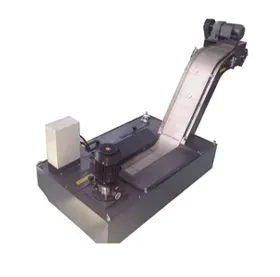synchronous belt
Understanding Synchronous Belts The Backbone of Mechanical Power Transmission
Synchronous belts, also known as timing belts, are crucial components in various mechanical systems that require precise motion control and power transmission. Unlike traditional V-belts, which operate on friction, synchronous belts rely on the engagement of teeth to achieve synchronous movement. This fundamental design makes them indispensable in applications where timing and accuracy are paramount.
The Design and Functionality of Synchronous Belts
Synchronous belts are made from durable materials such as neoprene or polyurethane. They feature internal teeth that mesh with external teeth on pulleys, ensuring a direct transfer of power without slippage. This tooth design is what distinguishes synchronous belts from other belt types, making them ideal for applications that demand exact timing, such as in automotive engines, robotics, and conveyor systems.
The construction of synchronous belts allows for a variety of configurations in terms of tooth profile, width, and pitch. Common tooth profiles include trapezoidal and rounded, each providing different advantages in terms of load capabilities and operational efficiency. The pitch, which refers to the distance between the centers of the teeth, can also be tailored to meet specific application requirements, facilitating greater versatility in design.
Applications of Synchronous Belts
Synchronous belts find applications in a wide range of industries. In the automotive sector, they are essential for driving camshafts and crankshafts, ensuring the engine's timing is synchronized accurately. This synchronization is critical for the efficient operation of engines, preventing issues such as valve slapping or interference between moving parts.
In manufacturing, synchronous belts are extensively used in conveyor systems, enabling smooth and reliable movement of goods. They are integral to automated production lines where precision and timing influence overall efficiency. Furthermore, synchronous belts are employed in various machinery, including textile machines, printing presses, and packaging equipment, demonstrating their adaptability across sectors.
synchronous belt

Advantages of Synchronous Belts
The use of synchronous belts offers several advantages over traditional belts. One significant benefit is their ability to maintain precise timing, which is crucial in high-speed applications. The eliminated risk of slippage translates to increased operational efficiency and reduced wear on associated components, leading to longer service life and reduced maintenance costs.
Another advantage is their capacity to handle high levels of torque without stretching. This feature allows synchronous belts to transmit greater power than conventional belts, making them suitable for demanding applications. Additionally, these belts operate more quietly than other belt types, contributing to reduced noise levels in industrial settings.
Maintenance and Considerations
While synchronous belts are generally reliable, proper maintenance is essential to ensure their longevity and performance. Regular inspection for wear and tear is crucial, as damaged belts can lead to misalignment and reduced efficiency. It is also vital to maintain the correct tension to prevent slippage or excessive strain on the motor and pulleys.
Moreover, the environment in which synchronous belts operate should be considered. Exposure to extreme temperatures or harsh chemicals can affect their integrity, necessitating the selection of materials suited to specific conditions.
Conclusion
Synchronous belts play a fundamental role in the mechanical systems of various industries, offering precise timing and efficient power transmission. Their unique design allows for flexibility in application and adaptability to different environments, making them an essential component in modern machinery. With proper maintenance and an understanding of their capabilities, synchronous belts can significantly enhance operational efficiency and reliability, solidifying their position as a crucial element in the world of mechanical engineering.








